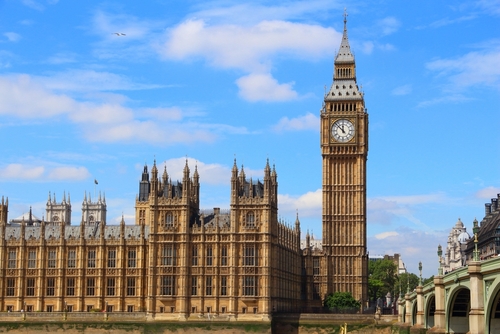RPT-COLUMN-Russian hybrid warfare could leave Europe’s energy consumers in the cold: Bousso

By Ron Bousso
LONDON, Oct 13 (Reuters) - The recent surge in suspected Russian "hybrid warfare" incidents across Europe has put governments on high alert, raising questions about the vulnerability of the region’s energy infrastructure as the continent enters the critical winter heating season.
Preventing sabotage of a massive energy network poses security and logistical challenges. But Europe’s leaders may need to start planning.
With temperatures set to start dropping, the region is seeing an uptick in so-called hybrid warfare, which Russia is widely believed to be behind. These aggressive actions, such as airspace violations, threaten the continent but have avoided triggering a military response from NATO as Moscow denies involvement.
European governments have blamed Russia for a wave of drone incursions in recent weeks, including some that led to severe disruptions at airports in Denmark and Norway. Drones were also spotted over Danish North Sea oilfields in September, Poland shot down suspected drones that entered its airspace on September 10, and 10 days later, Russian military jets violated Estonian airspace.
Since the first incursions of 20 Russian drones into Poland on September 9, northern European NATO member states have registered at least another 38 incidents spanning Scandinavia, Belgium, and the Baltic states, according to the Washington-based Center for European Policy Analysis.
Beyond drone flights, recent incidents have also included suspected ship navigation system jamming, cyberattacks, and sabotage on infrastructure across Europe.
Moscow has repeatedly denied responsibility for these hybrid attacks. But reports suggest some of the aircraft were launched from Russian tankers off Europe’s coastline.
ENERGY VULNERABILITY
The latest wave of hybrid attacks has not directly involved Europe’s energy infrastructure, which includes thousands of kilometres of underwater and overground gas pipelines and power cables, LNG processing terminals, electricity pylons and substations, offshore oil and gas fields, and solar and wind farms.
However, the rise in hybrid incursions comes as Russia and Ukraine are ratcheting up direct strikes on each other’s energy facilities. Ukrainian drone attacks on Russian refineries led to fuel shortages and a drop in exports, while Russia has launched massive strikes on Ukraine’s gas production facilities in recent days.
Given this backdrop, energy infrastructure would appear to be a natural target for further hybrid attacks. Supply and demand in Europe’s energy markets are currently in a delicate balance entering winter, meaning the continent is vulnerable to disruptions that could lead to price spikes and higher heating bills.
Hybrid attacks on Europe’s energy infrastructure would not be unprecedented.
On Christmas Day 2024, the Russian-linked tanker Eagle S dragged its anchor across the Gulf of Finland, severing the Estlink-2 power cable between Finland and Estonia, triggering a national emergency. A year earlier, a ship sailing from Russia damaged the Balticconnector gas pipeline between Estonia and Finland.
Energy-related cyberattacks – which pose a significant risk to Europe’s increasingly digitalized and interconnected markets – have also already been seen in the past three years.
On the day of Russia’s invasion of Ukraine, a cyberattack on ViaSat, a broadband satellite communications firm, disrupted operations of German wind turbine service provider Enercon, leading to the loss of remote monitoring access to more than 5,800 wind turbines in Germany. British and U.S. intelligence services said Russia was behind the attacks.
UNPREPARED
This raises the question of whether Europe is sufficiently prepared for future hybrid attacks on its energy systems. The answer is almost certainly “no.”
Europe and NATO have ramped up defensive efforts, such as the Baltic Sentry initiative to increase the group’s naval presence in the Baltic Sea, while European leaders have backed plans to create a “drone wall” along the bloc’s eastern border.
"There has definitely been increased effort to prop up defensive and protection measures, especially in the physical gas and power infrastructure sectors around the Baltic and Scandinavian regions,” notes Henning Gloystein, managing director of energy, industry and resources at Eurasia Group. But he adds, “There are still some shortfalls."
What would it mean to shore up these gaps, given that 24/7 surveillance of Europe's vast energy network is obviously unrealistic?
One answer is for governments, suppliers, and consumers to diversify their energy sources as much as possible. That could mean building backup gas delivery systems, using local renewable power plants and battery storage sites, and increasing strategic gas storage.
Europe’s energy system successfully adapted to the rapid changes required following Russia’s 2022 invasion of Ukraine, replacing Russian pipeline gas with imports of liquefied natural gas. But this came at a huge economic cost.
Russian hybrid warfare poses a new threat that could lead to severe hardship for European households if Moscow targets energy systems during the vulnerable winter period. Tackling this threat will require significant cooperation – and likely substantial spending – by both governments and companies.
But they may have little choice. Winter is coming.
Want to receive my column in your inbox every Monday and Thursday, along with additional energy insights and links to trending stories? Sign up for my Power Up newsletter here.
Enjoying this column? Check out Reuters Open Interest (ROI), your essential new source for global financial commentary. ROI delivers thought-provoking, data-driven analysis. Markets are moving faster than ever. ROI can help you keep up. Follow ROI on LinkedIn and X.








